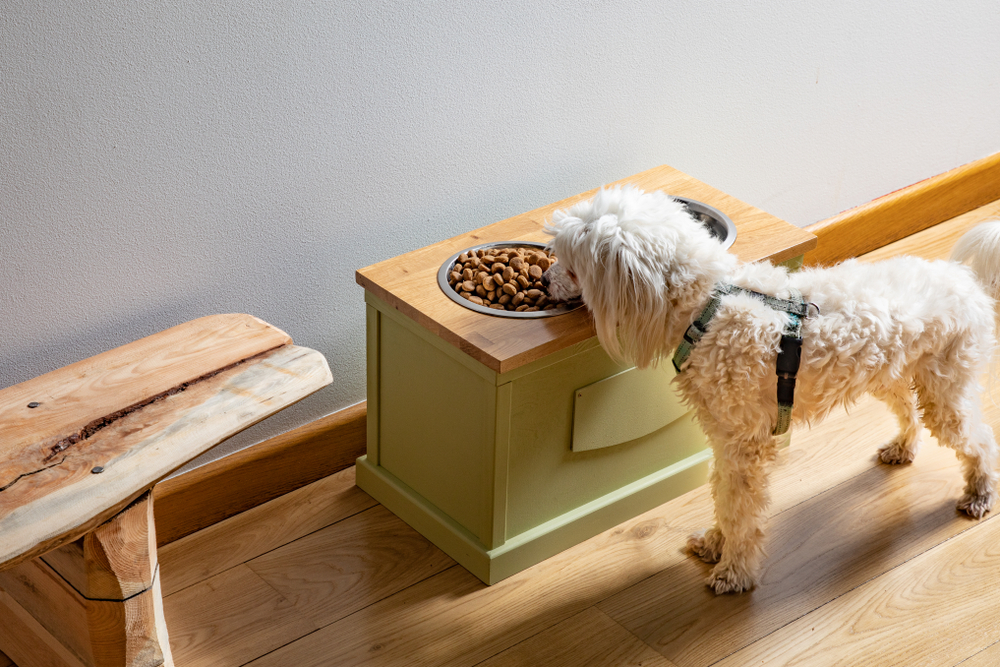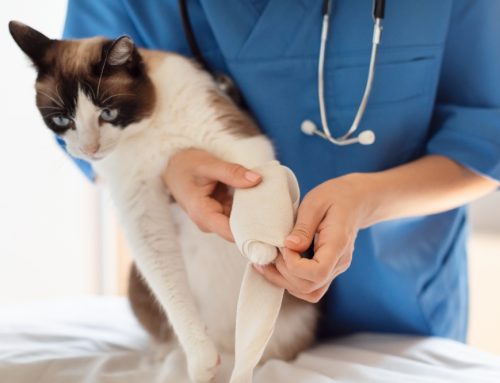Many pet owners assume that slowing down, playing less, or sleeping more are normal aging dogs’ and cats’ behaviors. While pets do become less active as they reach their golden years, these changes can also indicate they are experiencing arthritis pain. By learning to recognize early arthritis signs, you can help ensure your pet receives disease intervention that helps maintain their comfort and mobility if they develop this progressive condition. Our Lytle Veterinary Clinic team shares answers to frequently asked questions (FAQs) about pets’ arthritis.
Question: What is arthritis in pets?
Answer: Pets’ arthritis (i.e., degenerative joint disease) causes self-perpetuating damage that occurs inside affected joints. The disease most often impacts older pets and becomes progressively worse over time. The process starts with cartilage damage and inflammation inside the joint, which leads to additional damage and inflammation. An affected pet guards the painful, inflamed joint, which leads to muscle atrophy and weakness. If your dog or cat does not receive treatment to interrupt this inflammation and pain cycle, their problem only worsens.
Q: What causes arthritis in pets?
A: Arthritis usually affects middle-aged or older pets and may be related in part to joint wear and tear or inflammation other diseases cause. Arthritis can also result from joint injuries or dysplasias, infections, or auto-immune diseases. Obese pets are at a greater risk for developing arthritis.
Q: What are some arthritis signs in dogs?
A: To help maintain your dog’s mobility, you need to be able to recognize their arthritis signs before the condition becomes severe. Dogs’ arthritis usually presents with characteristic signs, which include the following:
- Limping
- Bunny hopping
- Difficulty rising from a sitting or reclining position
- Morning stiffness
- Joint swelling
- Muscle atrophy
- Reduced play or activity
Q: What are some arthritis signs in cats?
A: Cats’ arthritis signs can be more difficult to identify than those of dogs. Cats’ arthritis signs may include the following:
- Hesitancy or difficulty with stairs or jumping
- Accidents outside the litter box
- Reduced grooming
- Stretched-out sleeping positions
- Irritability
Q: How do veterinarians diagnose arthritis in pets?
A: Our Lytle Veterinary Clinic team may suspect your pet has arthritis based on your description of problems your furry pal is exhibiting at home, or from physical examination findings, including a reduced joint range of motion, joint pain, joint swelling, joint crepitus (i.e., crackling or popping), or abnormal gait. We may diagnose your cat’s arthritis incidentally during a test for another condition. Our veterinary team may order the following tests to confirm an arthritis diagnosis and rule out other potential causes:
- X-rays
- Blood and urine tests
- Joint fluid analysis
Q: What are the treatment options for pets who have arthritis?
A: Fortunately, many effective arthritis treatment options exist. Most pets require a multimodal treatment approach that includes several treatments that work together to produce synergistic effects. What works for one pet may not work for another, so trial and error is sometimes involved. Pets’ arthritis treatment options include the following:
- Anti-inflammatory medications
- Pain medications
- Long-lasting injectable pain medications (i.e., biologics)
- Joint health supplements
- Rehabilitation therapies
- Regenerative medicine (i.e., stem cell therapy, platelet-rich plasma)
- Surger
Q: How can I reduce my pet’s arthritis risk?
A: You can reduce your pet’s arthritis risk or the impact the condition may have on them by helping maintain their joint health throughout their life. The following strategies may be helpful:
- Maintain your pet’s lean, healthy body weight.
- Provide your pet with high-quality nutrition that includes ample omega-3 fatty acids.
- Provide controlled exercise to strengthen your pet’s joints without causing damage or strain.
Sometimes arthritis development is inevitable, such as after an injury or if a pet has abnormal joint mechanics such as luxating patellas or hip dysplasia. In these cases, early detection is the best way to help ensure you can stop the inflammatory process and control your pet’s pain.
Q: What can I do to make an arthritic pet more comfortable at home?

A: Arthritic pets often benefit from household changes that make getting around easier, safer, and more comfortable for them. To help your ailing pet, follow these tips:
- Place extra-supportive beds throughout the house.
- Add litter boxes to each house level to reduce your cat’s need to use the stairs.
- Add or move food and water dishes so they are easily accessible.
- Place rugs and runners on floors in high-traffic areas to increase traction.
- Try rubber toe grips for dogs to help increase their traction and help prevent falls.
Untreated arthritis can greatly diminish your furry pal’s quality of life, but early diagnosis and intervention can restore pain-free mobility. Because early arthritis signs are easy to miss, schedule your pet’s annual wellness visits with our Lytle Veterinary Clinic team.







Leave A Comment